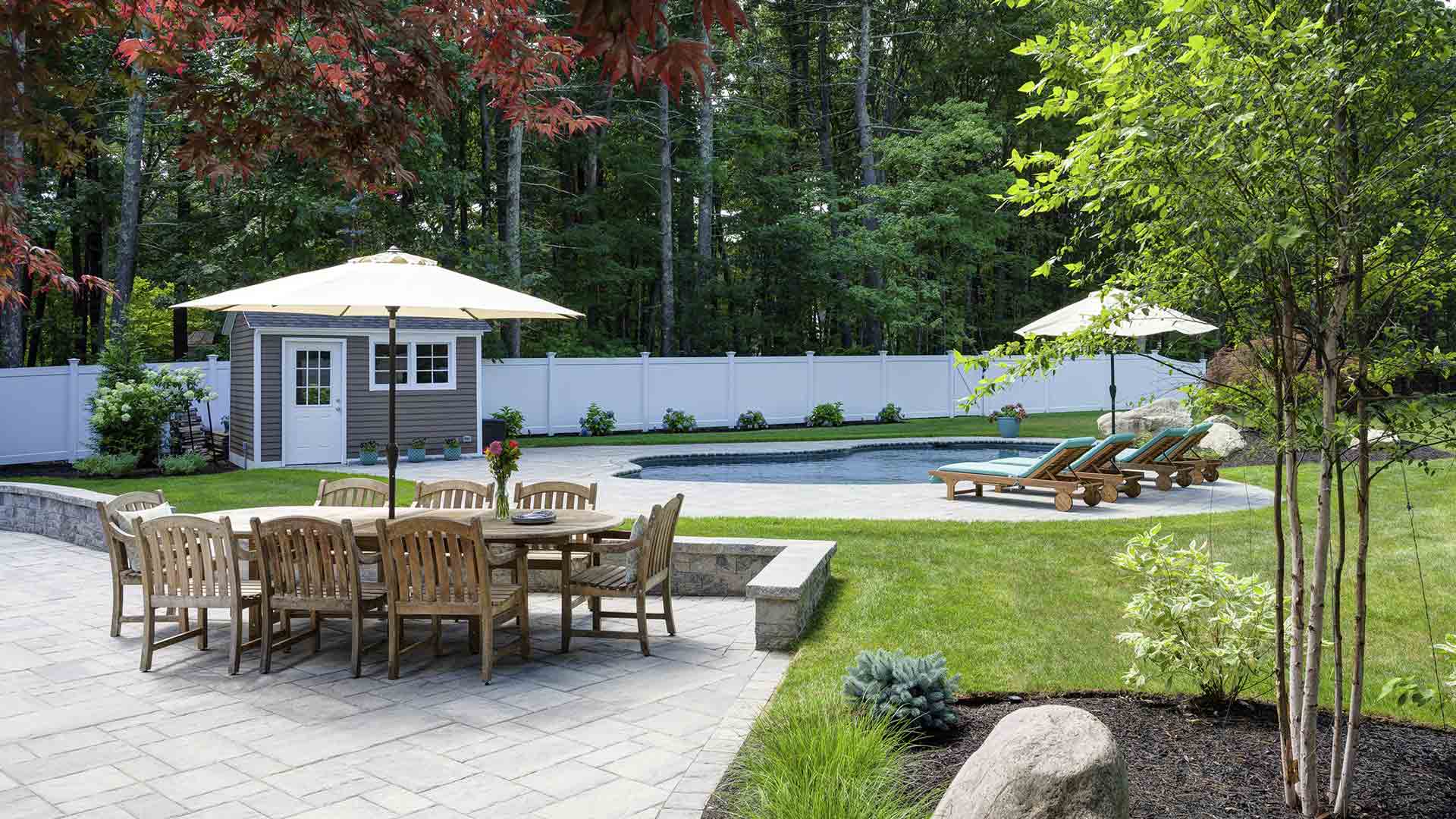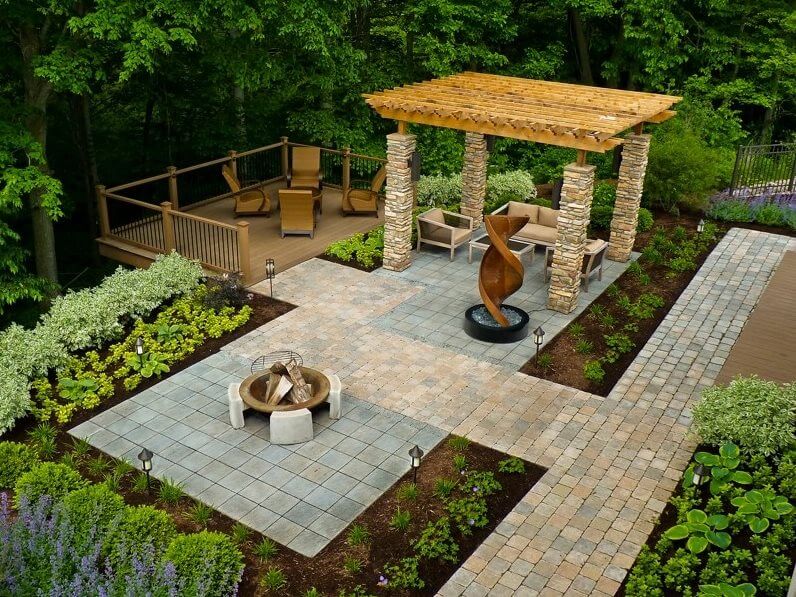The Basic Principles Of Landscapers
The Basic Principles Of Landscapers
Blog Article
The smart Trick of Landscapers That Nobody is Talking About
Table of Contents8 Easy Facts About Landscapers ExplainedThe Greatest Guide To LandscapersThe Best Guide To LandscapersGetting The Landscapers To WorkLandscapers - Truths
Each of these components has a certain purpose and symbolism, and when incorporated in properly, they develop a well balanced and harmonious landscape - Landscapers. Rocks are taken into consideration the foundation of a Japanese garden. They stand for hills or islands and are strategically placed to create a feeling of depth and viewpointIt can take the form of a fish pond, stream, or waterfall, and its purpose is to add activity, sound, and reflection to the landscape. Plants, specifically evergreens and deciduous trees, play a vital role in producing a Japanese garden. They are very carefully chosen for their form, color, and structure to add rate of interest and comparison to the landscape.
These man-made components often have spiritual or spiritual relevance in Japanese society and are carefully placed within the landscape to develop centerpieces. Photography by Garrett Chef Desert gardens, additionally referred to as xeriscaping or arid landscaping, thrive in completely dry and drought-prone areas (Landscapers). These yards showcase plants that have actually expanded familiar with the hot and arid conditions, making them low-maintenance and water-efficient

They are naturally used to the neighborhood climate, dirt problems, and wildlife, making them extra resilient and better suited to flourish in their atmosphere. This design style accepts the beauty of regional flora and animals, advertising a feeling of place and attaching us to the land we reside on. Photo: Christopher Lee Mediterranean gardens stemmed in the nations surrounding the Mediterranean Sea, such as Italy, Greece, and Spain, where the climate is warm and completely dry.
The Landscapers PDFs
In a Mediterranean environment, the summer heat and aridity are significant obstacles for plant development. To address this, Mediterranean yard style incorporates elements that offer shade, such as pergolas and arbors, to protect plants from straight sunlight during the hottest hours of the day. These frameworks offer a practical purpose but also add architectural interest to the yard.
To battle this, watering strategies such as drip watering are commonly utilized to ensure that plants get an ideal amount of water without losing it. Formal yards are frequently related to grand estates and palaces, where everything is perfectly balanced and in line. These yards adhere to a strict geometric pattern, with straight lines and right angles controling the layout.
The use of hardscaping aspects such as water fountains, statuaries, and pathways is also usual in formal gardens. Casual yards tend to have rounded pathways, off-and-on shaped flower beds, and a mix of different plant species.
:max_bytes(150000):strip_icc()/GettyImages-154046398-c39f1daf45a84601b328d78ed8630660.jpg)
The Of Landscapers
The design is so popular that it doesn't stand out considering that so many individuals have it. The bulk of the landscapes throughout the nation are traditional design.
Typical elements of a traditional Read Full Article landscape style are red brick pavers organized in a classic herringbone pattern and home design yard beds with a great combination of perennials and bushes. You can find conventional landscaping used at the historic homes in midtown Idaho Falls. This design gives a good equilibrium of indigenous and non-native plants.
Since the style has been around for awhile, even more people have it, so it does not stand apart as a lot. A modern landscape has one of the most edgy design style. Intense tinted a fantastic read plants incorporate with bold steel containers and home furnishings. Every aspect is much more polished and precise. Shrubs and plants are typically extra specifically organized and pruned right into forms versus being even more natural.
It's not about the design of home a landscape fits, yet a lot more the products it's constructed of. Locating products for this design, such as containers made of metal, can be much more challenging, so it can set you back a little much more. This style brings sleek class. While bushes need to be trimmed to keep their shapes, this design of landscape needs much less customized upkeep.
See This Report about Landscapers
Richer landscape beds with lots of shade that require greater levels of upkeep and maintenance. A newer landscape design that's arised recently is the rustic modern design.
This style goes best with homes that are rustic or contemporary, and it has a nice blend of the pros and disadvantages of those styles detailed above (Landscapers). Uncertain which style fits you best? Factoring in maintenance and overall layout and care costs can assist persuade you in one direction over one more based on your choices
For one, since products like rocks and rough-hewn wood are so popular right here, they are simple to get. Additionally, plants are left to grow more normally, as in they do not require to be a symmetric, trimmed shape. On the various other hand, modern and cottage style yards are generally much more costly to install and require even more maintenance.
You can develop an aesthetically pleasing landscape by following these six principles of layout. There are six concepts of layout that have been made use of by artists for centuries throughout all art types, painting Read More Here and floral design along with landscape design. They are: Balance Focalization Simplicity Rhythm and Line Proportion Unity Equilibrium is a state of being in addition to seeing.
The Single Strategy To Use For Landscapers
There are two major kinds of equilibrium: symmetrical and unbalanced. In proportion equilibrium is utilized in formal landscapes when one side of the landscape is a mirror image of the opposite side. These landscapes commonly make use of geometric patterns in the pathways, growing beds and also how the plants are trimmed right into forms.

Each area of the landscape might consist of a focal factor, but it is absolutely not essential. Landscape designers must not overuse focal factors.
Maintaining landscapes basic, not cluttered or fussy is always a good technique. This is not the opposite of complexity. Lots of landscapes have extremely complicated functions, including the architectural layout, water attributes and substantial lights functions. Landscapes that make individuals happy and comfy avoid making use of too numerous colors, forms, contours and appearances, but in no other way does this mean simple, monotonous or lack of creativity.
Report this page